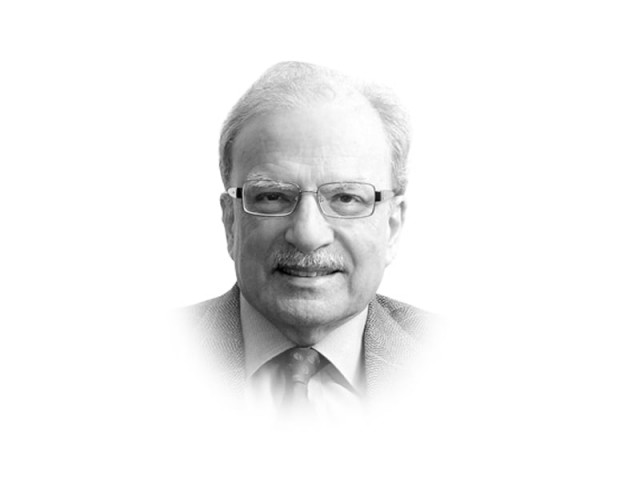Pakistan’s most difficult test
The current structure of the Pakistani economy was shaped to a considerable extent by the past.

Pakistan’s most difficult test
The current structure of the Pakistani economy was shaped to a considerable extent by the past. So were its relations with many countries in the region. It helps to understand how that happened in order to deal with the problems to which the past may have contributed. One possible solution to the many problems Pakistan faces today is to improve the country’s relations with India, the sister state to the south. Why focus on relations with India is a question that needs a detailed answer.
Pakistan, a crisis prone country, is now faced with its most difficult test. The government that holds the reins of power in Islamabad is preparing to complete its first term in office. Will that happen and will the PPP-led coalition in Islamabad call for another set of elections sometime before the end of Spring of 2013? If the country passes that critical mark on the way to its further political evolution, it would have possibly set itself on a course it has been seeking to travel on ever since it gained independence nearly 65 years ago. There are many hurdles over which it must jump before the country reaches that point. If it does, would that mean the end of the period of crises that began the moment the military passed the baton to an elected set of people’s representatives?
The period since March 2008 — when the current prime minister from the PPP took office — has seen many crises not just in politics but in a number of other areas as well. Nothing has remained unaffected — not economics, not the society at large, not relations with the world beyond the borders. Pakistan’s torrid history is speckled with crises. They arrived at regular intervals to claim the attention of the people in power. This preoccupation with finding solutions to crises deflected a series of policymakers from evolving a long-term vision for developing the economy and shaping the political system.
Crises began the day the British decided to transfer power not to one, but to two successor states. One state — India — was created on the basis of an idea that the state structure could be erected that would serve all people, all the time. That idea has mostly worked. But the ‘idea of Pakistan’ did not work. Pakistan was given statehood in the belief that the Muslims of British India could not live in a political system and in an economy dominated by people from other faiths. They had to have a country of their own which they could mould according to their sets of beliefs. These were different from those on which India would build its own state structure.
Less than a quarter century after gaining independence, Muslim Pakistan broke into two parts. The one in the east used ethnicity to create the state of Bangladesh. As the name of the new country implies, it was to be a country for ethnic Bengalis. The other part in the west, then called West Pakistan, retained the name of Pakistan. The new Pakistan was multi-ethnic, spoke several languages but did not know what should be the basis of nationhood.
Is it necessary for Pakistan to define the meaning of nationhood? After all, hundreds of new states have been created since the founding of Pakistan and only a handful of those are based on an ‘idea’. However, Pakistan having been established on the basis of a distinct idea, believes that it must have a reason for its existence as a separate state. For more than half a century, it used India as the basis of nationhood. Perceived Indian threat was used for decades by various groups of Pakistani leaders to create a sense of statehood among a very diverse citizenry. To some extent, the impression that India was set to undo Pakistan was justified by a series of actions taken by the first Indian administration under prime minister Jawaharlal Nehru. It seemed determined to cripple Pakistan before it could develop its own economic legs on which it could stand. This India centric approach may have made sense in the first decade or so after independence since, a number of crises were created by the hostility of the administration headed by Nehru. But it has now lost its relevance.
The drama of crises in Pakistan divides into three acts. The first, as already suggested, figured India. New Delhi took a number of actions — some real, others more feared than real — that made the leaders of Pakistan extremely nervous about the intentions of India towards their country. The second figured leaders in Pakistan with strong ideological preferences. General Ayub Khan, the first military president, favoured the private sector to take the lead in developing the economy. Zulfikar Ali Bhutto was disposed towards a socialist approach, choosing to expand the role of the state in economic management. General Ziaul Haq was inclined to ‘Islamise’ the economy without fully appreciating what that implied.
The third act in the drama is the one that is playing out at this time. Most of the crises the country currently faces are the product of poor governance. In this context, the term ‘poor governance’ needs to be defined in broad terms. It means more than corruption, of which there is a great deal in the country. It also means neglecting the creation of institutions without which no economy can develop. One thing is clear about this on-going, three-act drama. It is only by building the capacity to deal with crises that their recurrence can be prevented.
Published in The Express Tribune, February 21st, 2012.












COMMENTS
Comments are moderated and generally will be posted if they are on-topic and not abusive.
For more information, please see our Comments FAQ